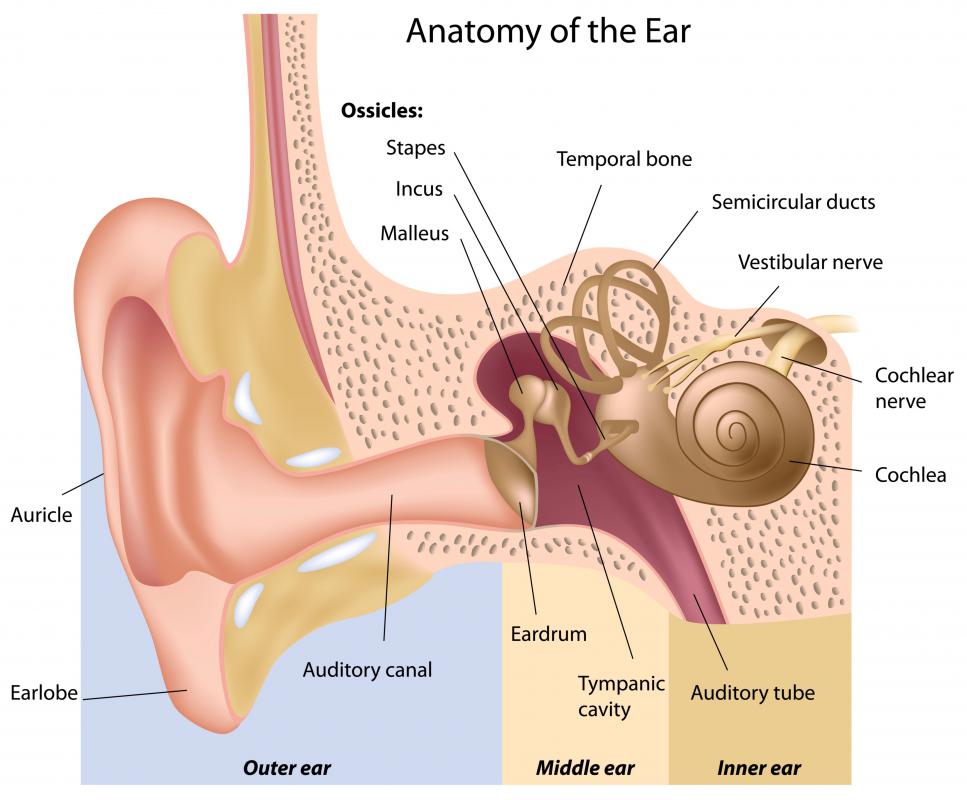At TheHealthBoard, we're committed to delivering accurate, trustworthy information. Our expert-authored content is rigorously fact-checked and sourced from credible authorities. Discover how we uphold the highest standards in providing you with reliable knowledge.
What Can I Expect from Cholesteatoma Surgery?
Cholesteatoma surgery is a type of surgical procedure designed to remove an abnormal growth located inside the ear. There are two basic types of cholesteatoma surgery, known as a tympanoplasty and a tympanomastoidectomy. The type of procedure used depends on the severity of the condition as well as the size and location of the tumor. Possible complications include facial paralysis, hearing loss, and disturbances involving the ability to taste. Any questions or concerns about cholesteatoma surgery in an individual situation should be discussed with a doctor or other medical professional.
The type of cholesteatoma surgery known as a tympanoplasty involves an incision into the ear canal that reveals the middle ear. The nerve that controls taste is sometimes moved during this procedure, resulting in a temporary taste disturbance. If the nerve becomes damaged during the surgery, a permanent metallic taste in the mouth may develop. In some cases, the incus bone needs to be removed, which may result in temporary balance issues. The eardrum is then surgically repaired and fitted with either the patient's own incus bone or an artificial prosthetic bone.

Another type of cholesteatoma surgery is known as a tympanomastoidectomy. In this procedure, the mastoid bone, which is located behind the ear, is removed, either temporarily or permanently. This procedure is known as a mastoidectomy and is performed at the same time as the tympanoplasty. This is a more complex type of cholesteatoma surgery and carries a higher risk of complications, making frequent medical monitoring extremely important. While most patients notice favorable improvements, such as increased hearing function, ability to perform activities such as swimming without complications, and improved cosmetic appearance, there are some potential risks associated with cholesteatoma surgery.

Some of the risks or complications that may occur as a result of cholesteatoma surgery include partial or total facial paralysis, hearing loss, and balance or coordination difficulties. Many of these side effects are either temporary or can be reversed with the use of medications or additional surgical procedures. Occasionally, the damage may be so severe that permanent injury results from the surgery. It is important for the patient to discuss any concerns with the treating physician before undergoing the procedure. Most patients will need to be closely monitored for a period of several months or even years following the surgery to ensure that complete healing has occurred and the tumor has not returned.
AS FEATURED ON:
AS FEATURED ON:












Discussion Comments
You should be checked by an ENT, for sure. It may be nothing then again, it could be a cholesteatoma which at 57 years, I'm getting ready to have.
I have had the problem of a running ear for the last 40 years and a perforation in the right ear. Can I now go for the surgery?
Post your comments